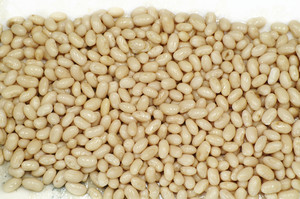Coffee is one of the most popular drinks in the world. Whether it’s a morning cup or an afternoon pick-me-up, coffee has become a staple for many people around the globe. But do you know where your favorite brew comes from? Let’s take a look at the journey of coffee beans and how they are picked, roasted, and brewed.
Types of Coffee Beans
There are several types of coffee beans available on the market today. Some of the most common ones include Arabica, Robusta, Liberica, and Excelsa. Each type has its unique flavor profile that can range from sweet and fruity to bold and earthy.

Arabica beans are considered by many as the highest quality bean due to their delicate taste and low acidity levels. On the other hand, Robusta beans have a stronger and more bitter taste but contain higher amounts of caffeine. Meanwhile, Liberica and Excelsa beans are native to the Philippines and Indonesia respectively and offer a unique taste that falls somewhere between Arabica and Robusta.
Where Do Coffee Beans Come From?
Coffee beans come from the fruit of the coffee plant which grows in tropical regions all over the world. These plants require specific environmental conditions such as high humidity, warm temperatures, and plenty of sunlight to grow properly. Once harvested, the cherries are processed through various stages before becoming the familiar coffee beans we enjoy every day.
The Process of Picking, Roasting, and Brewing Coffee Beans
Picking – After being harvested, the coffee cherries go through a process called pulping where the outer skin and flesh of the cherry are removed leaving only the inner seed or “bean”. This process also removes any remaining flesh still attached to the bean which could affect the final flavor of the coffee.
Roasting – Next, the green coffee beans undergo a series of heating processes known as roasting. During this stage, the beans turn from light brown to darker shades depending on the desired level of roast. Lighter roasts tend to retain more of the original flavors while darker roasts develop deeper, bolder tones.
Brewing – Finally, once the coffee beans have been roasted, they need to be ground and brewed using hot water to extract their natural oils and essences. There are different methods of brewing including drip brewing, pour-over, French press, and espresso machines among others.
Different Coffee Blends

Blending different coffees together creates unique blends with distinctive flavors. For example, a blend may consist of beans sourced from multiple countries or even different farms within the same country. A skilled barista will use their expertise to create customized blends based on customer preferences. Additionally, some specialty coffee shops offer single origin coffees which highlight the characteristics of a particular farm or region.
In conclusion, the journey of coffee beans begins with the growth of the coffee plant and ends with the perfect cup of coffee enjoyed by millions of people around the world. Understanding the intricacies involved in each step of the process helps us appreciate our daily cups of joe even more!